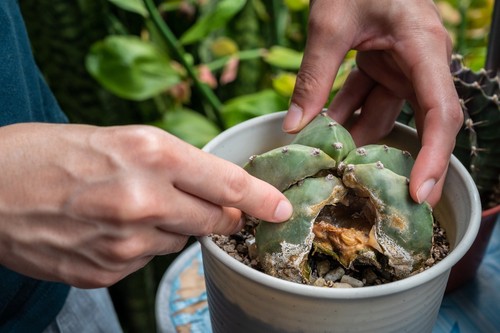Cactus plants are known for their unique beauty and resilience, but even the toughest plants can sometimes fall prey to environmental stressors that can cause them to wilt and die. A dying cactus plant can be a heartbreaking sight for any plant lover, but with the right care and attention, it may be possible to revive even the most withered of plants.
Understanding the unique needs of cactus plants is the first step in nursing a dying cactus back to health. These plants are adapted to thrive in arid environments, and as such, they have evolved to store water in their thick, fleshy stems and leaves.
Overwatering, underwatering, and poor soil drainage are some of the most common causes of a dying cactus, but other factors like pests and disease can also contribute to a plant’s decline.
Key Takeaways:
- Understanding the unique needs of cactus plants is the first step in nursing a dying cactus back to health.
- Overwatering, underwatering, and poor soil drainage are some of the most common causes of a dying cactus, but other factors like pests and disease can also contribute to a plant’s decline.
- To save a dying cactus, it is important to identify the underlying cause of the problem, provide immediate care, and take steps to prevent future issues.
You will also like these other top posts:
- Dying Basil Plant
- Dracaena Plant Dying?
- Exploring the Connection Between Dying Plants and Ammonia Levels
Understanding Cactus Plants
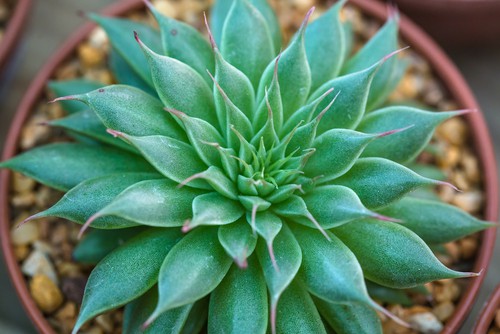
Cacti are a unique group of plants that are known for their ability to thrive in desert conditions. They are succulent plants, meaning they store water in their leaves, stems, and roots, which allows them to survive in areas where water is scarce. In this section, we will explore the different aspects of cactus plants.
Cacti in Different Seasons
Cacti are known for their ability to survive in extreme conditions, including hot summers and cold winters. During the summer months, cacti can store water in their tissues to help them survive the heat. In the winter, some cacti can go dormant, which means they slow down their growth and conserve their energy until the weather warms up again.
Cactus as a Houseplant
Cacti are popular houseplants because they are easy to care for and can add a unique touch to any room. When growing cacti indoors, it is important to provide them with plenty of light and well-draining soil. Overwatering is a common mistake people make when caring for cacti, so it is important to let the soil dry out completely between watering.
Different Species and Varieties
There are over 2,000 species of cacti, each with its unique characteristics and growing requirements. Some cacti are tall and columnar, while others are small and round. Some have spines, while others have soft, fuzzy hairs. Some species of cacti are native to the deserts of the Americas, while others are found in Africa and Asia.
Some popular cactus species and varieties include:
- Saguaro cactus (Carnegiea gigantea): This iconic cactus is native to the Sonoran Desert in Arizona and can grow up to 40 feet tall.
- Barrel cactus (Echinocactus grusonii): This round cactus is covered in spines and can grow up to three feet tall.
- Christmas cactus (Schlumbergera): This popular houseplant blooms in the winter and has colorful flowers in shades of pink, red, and white.
Dying Cactus Plant – 3 Common Problems
Cacti are known for their ability to thrive in harsh conditions, but they are not invincible. There are several reasons why a cactus might be dying. In this section, we will explore the most common causes of a dying cactus.
1. Overwatering and Underwatering
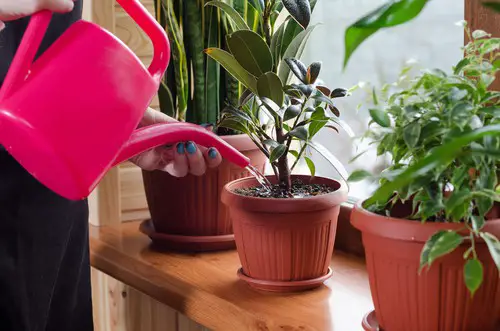
One of the most common causes of a dying cactus is overwatering or underwatering. Cacti are adapted to survive in dry environments and do not require frequent watering. Overwatering can lead to root rot, which is a fungal infection that causes the roots to rot and the plant to wilt. On the other hand, underwatering can cause the cactus to dry out and become discolored.
To avoid overwatering or underwatering, it is important to understand the water requirements of your cactus. As a general rule, cacti should be watered only when the soil is completely dry. The frequency of watering will depend on the species of cactus, the size of the pot, and the environmental conditions.
2. Exposure to Harsh Conditions
Cacti are adapted to survive in harsh conditions, but they have their limits. Exposure to extreme temperatures, such as freezing or sunburn, can cause a cactus to die. Freeze damage can cause the cactus to become discolored, while sunburn can cause the cactus to develop brown spots or corking.
To protect your cactus from harsh conditions, it is important to provide the right amount of shade and protection from extreme temperatures. If you live in an area with cold winters, it is important to bring your cactus indoors or provide it with a protective covering.
3. Insect Infestation and Diseases
Insect infestations and diseases can also cause a cactus to die. Mealybugs are a common pest that can infest cacti and cause wilting and discoloration. Fungal infections can also cause the cactus to rot or develop stem rot.
To prevent insect infestations and diseases, it is important to keep your cactus healthy and free from stress. Avoid overwatering, provide the right amount of sunlight, and avoid exposing your cactus to extreme temperatures. If you notice any signs of insect infestations or diseases, it is important to take action immediately to prevent further damage.
Symptoms of a Dying Cactus
Cacti are generally hardy plants that can survive harsh conditions, but even they can succumb to death if not cared for properly. Here are some common symptoms of a dying cactus to look out for:
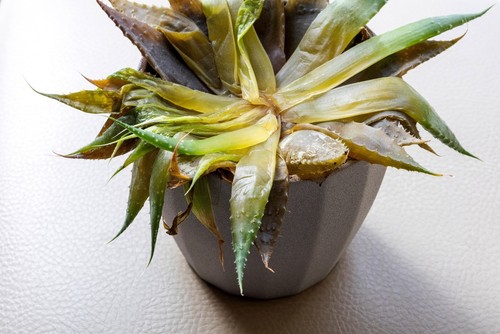
1. Discoloration
A healthy cactus should have a vibrant green color. If you notice that your cactus is turning yellow, brown, or black, it may be a sign of distress.
2. Soft or Mushy Texture
If your cactus feels soft or mushy to the touch, it may be a sign of rot. This is often caused by overwatering or poor drainage.
3. Shriveled Appearance
A cactus that is dying may appear shriveled or deflated. This is often a sign of dehydration, which can be caused by under watering or insufficient humidity.
4. Wilting or Drooping
If your cactus is wilting or drooping, it may be a sign of root rot or other issues. This can be caused by overwatering, underwatering, or poor soil quality.
5. Discolored Spots
If you notice brown or black spots on your cactus, it may be a sign of infection or disease. This can be caused by pests, fungi, or bacteria.
6. Soft Segments
If your cactus has soft or squishy segments, it may be a sign of rot or disease. This can be caused by overwatering, poor drainage, or other issues.
7. Foul Smell
If your cactus emits a foul odor, it may be a sign of bacterial or fungal infection. This can be caused by overwatering, poor soil quality, or other issues.
How to Save a Dying Cactus
Cacti are low-maintenance plants, but they can still suffer from various issues that can cause them to wilt, discolor, or even die. If you notice that your cactus is not looking its best, there are a few things you can do to try and save it. Here are some tips on how to save a dying cactus.
1. Proper Watering and Drainage
One of the most common reasons why cacti die is overwatering. Cacti are adapted to arid environments and do not need much water. In fact, too much water can cause the roots to rot and the plant to wilt.
To avoid overwatering, make sure you only water your cactus when the soil is completely dry. You can check the soil moisture level by sticking your finger about an inch into the soil. If it feels dry, it’s time to water.
When watering your cactus, make sure you use a pot with drainage holes. This will allow excess water to drain out of the soil and prevent water from accumulating at the bottom of the pot. If your cactus is in a pot without drainage holes, consider repotting it into a pot that has them.
2. Repotting and Soil Mixture
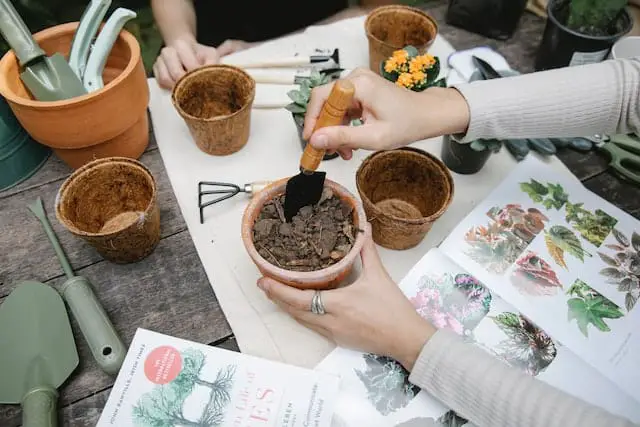
If your cactus is suffering from root rot or if it has outgrown its current pot, repotting it can help revive it. When repotting, make sure you use a well-draining potting soil mixture that is specifically formulated for cacti and succulents. You can also add some sand or perlite to the mixture to improve drainage.
When repotting, make sure you gently remove the cactus from its current pot and remove any dead or rotting roots. Then, place the cactus in a larger pot with fresh soil mixture and make sure it is planted at the same depth as before. Water the cactus lightly and avoid watering it again until the soil is completely dry.
3. Treatment for Diseases and Infections
If your cactus is suffering from a disease or infection, there are a few things you can do to treat it. For example, if your cactus has a fungal infection, you can try treating it with a solution of rubbing alcohol and water. Simply mix one part rubbing alcohol with three parts water and apply it to the affected areas with a cotton swab.
If your cactus has a bacterial infection, you may need to use a fungicide or bactericide to treat it. Make sure you follow the instructions on the label carefully and avoid using too much of the product, as this can harm your cactus.
Caring for a Cactus Plant
Caring for a cactus plant is relatively easy and straightforward. However, it is essential to understand the specific needs of the plant to ensure it thrives. This section will cover the watering and sunlight requirements, planting and soil type, and seasonal care for cacti.
Watering and Sunlight Requirements
Cacti are hardy plants that can survive in harsh conditions. They are adapted to survive long periods of drought, which means they do not require frequent watering. Overwatering can cause the roots to rot, which can lead to the death of the plant.
It is essential to allow the soil to dry out completely before watering again. The frequency of watering depends on the size of the pot, the type of soil, and the climate.
Cacti also require plenty of sunlight to grow and thrive. They prefer full sun, but they can also grow in partial shade. When grown indoors, cacti may not receive enough sunlight, which can cause them to become weak and leggy. It is essential to provide the plant with more sunlight by placing it near a window that receives plenty of natural light.
Planting and Soil Type
When planting a cactus, it is essential to use a well-draining soil mix. Cacti require a soil mix that does not retain too much moisture, as this can cause the roots to rot. A good soil mix for cacti should contain sand, perlite, and peat moss in proportionate amounts.
Cacti can be planted in pots or in the ground, depending on the climate. When planting in pots, it is essential to choose a pot that is slightly larger than the root ball. This allows the plant to grow and expand without becoming root-bound.
Seasonal Care
Cacti have a growing season and a dormant season. During the growing season, which is usually in the spring and summer months, cacti require more water and sunlight. During the dormant season, which is usually in the fall and winter months, cacti require less water and sunlight.
It is essential to adjust the watering cycle during the dormant season to prevent overwatering. Cacti can also be moved indoors during the dormant season to protect them from harsh weather conditions.
Preventing Future Problems

Preventing future problems with a cactus plant requires proper care and attention to its watering, pot, soil, drainage, planting, and other factors. First, it is important to ensure that the cactus is planted in a well-draining pot with appropriate potting soil that allows excess water to drain out. Overwatering can lead to root rot, which can be fatal to the cactus.
It is also essential to establish a regular watering cycle that allows the soil to dry out completely between watering sessions. During the dormant season, the cactus requires less water, and it is important to adjust the watering cycle accordingly.
Repotting the cactus into a larger pot may also be necessary as it grows, but it is important to avoid over-potting, which can cause the soil to retain too much moisture. A hardy plant, the cactus requires minimal care, but it is important to ensure that it receives adequate sunlight.
Withering or dead flowers can be removed to promote new growth, and it is important to properly care for the cactus during the winter months when it may require less water and sunlight. Overall, preventing future problems with a cactus plant requires attention to detail and proper care to promote healthy growth and longevity.
Frequently Asked Questions
How to save a dying cactus?
Saving a dying cactus depends on the reason why it’s dying. If the cactus is suffering from root rot, it is important to remove the damaged roots and repot the cactus in fresh soil.
If the cactus is drying out, it may need more water or to be moved to a shadier location. If the cactus is mushy, it may be suffering from overwatering and needs to be dried out.
Why is my cactus drying out?
Cacti can dry out for a variety of reasons, including underwatering, exposure to too much sunlight, or being planted in soil that doesn’t drain well. It is important to identify the cause of the drying out and adjust care accordingly.
How to trim a dying cactus?
Trimming a dying cactus can help prevent further damage and promote new growth. Use a clean, sharp knife to cut away any damaged or diseased areas. It is important to sterilize the knife before and after use to prevent the spread of disease.
How to revive a mushy cactus?
A mushy cactus is likely suffering from overwatering or root rot. To revive it, remove the cactus from the soil and allow it to dry out completely. Once it has dried out, repot it in fresh soil and adjust watering habits accordingly.
How to save a cactus without roots?
A cactus without roots can be saved by rooting it in water or moist soil. Place the cactus in water or soil and keep it in a warm, bright location. After a few weeks, roots should begin to grow, and the cactus can be transplanted into a pot with fresh soil.
What does an overwatered cactus look like?
An overwatered cactus may appear mushy or soft, and the leaves may turn yellow or brown. The cactus may also develop root rot, which can cause a foul smell and blackened roots. It is important to adjust watering habits to prevent overwatering and allow the soil to dry out between waterings.

Hey, I’m Lisa and I’ve been an avid gardener for over 30 years. I love writing, talking and living in the garden! Feel free to connect with me on my socials below

